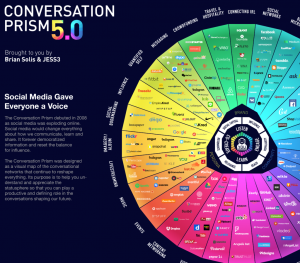
Twitter continues to impress its supporters and critics alike. With 100 million active users, one billion Tweets published every day, and a fresh round of funding, Twitter’s monetization strategy continues to mature. In addition to licensing deals for its coveted fire hose and a future revenue stream tied to analytics, Twitter’s blue bird truly flies with the help of its expanding portfolio of Promoted products. The company is now releasing its latest offering, and it’s the most controversial product yet. New Promoted ads currently in a limited round of tests, hit streams even if users do not already follow the brand but are “like” those who do. Notoriously conservative in pushing ads to its fiercely loyal audience, this move represents a Mad Men moment for Twitter as it ventures into bold new territory.
The new form of in stream ads are an extension of its existing Promoted Tweets product where ads are placed at the top of the stream if the user already followed the company. Additionally, brands can used Promoted Tweets tied to search to plug directly into the interest graph. The first ad produce released by Twitter helps brands reach people who search for relevant keywords by serving up a promoted Tweet related to the search. Twitter is expected to also introduce self-service products for smaller businesses later in 2011.
Twitter’s other advertising products help brands reach consumers by attracting attention in the active panel that frames the Tweet stream. Through Promoted Accounts, brands can buy an opportunity to increase the number of followers. And, with Promoted Trends, brands tempt users with intriguing words or hashtags to entice click-throughs.
Companies such as Starbucks, Virgin America and Coca-Cola have actively invested in a variety of Twitter’s Promoted products since the beginning and each claim that Twitter’s ads consistently deliver worthwhile performance. Brands continue to line up to be among the first to experiment with these new media buys.
In a marketing world where media is neatly divided into paid, earned, and owned (P.O.E.M.), Twitter forces marketers to think beyond the traditional banner mindset. I spent the last couple of years studying the new opportunities for brands in the new media world and vehicles, channels, and mindsets required to use them effectively. The new take on media was released recently with the help of JESS3 as The Brandsphere. It introduced Promoted and Shared as two new channels to round out paid, earned, and owned. For example with Twitter’s new Promoted product, brands are encouraged to look beyond flashy graphical elements or using images or names of friends as bait. Twitter is carefully monetizing its popular service by requiring brands to lure consumers through clever word play, linked by interests that drive noteworthy experiences. Brands now need to rethink the click-through experience to take consumers on an extraordinary journey to not only perform well, but also reinforce the value of Promoted products as they introduce potential disruption to the precious Tweet stream.
Will Twitter’s new product pay off? Advertisers are certainly willing to give it a try. In a recent study conducted by Pivot, 60% and 32% of brands that experimented with social advertising, including Twitter’s Promoted products, found the new form of advertising very useful and useful respectively. Of those we polled, 93% had deployed social ads on Facebook and 78% on Twitter.
When it comes to consumers and how they feel about Promoted ads in Twitter, Lab42 found that only 10.9% say that they “are annoying and take away from the Twitter experience.” For this moment in time, consumers are open to Twitter’s cautious expansion of new advertising products. In the same study, 24.8% had already reported seeing Promoted ads related to relevant brands. Another 21.6% have received discounts offered through Promoted Tweets, 21.2% found new brands, and 14% have retweeted Promoted Tweets.
If you look at the doors that Twitter’s promoted products open, you start to get an idea of just how far this can go.
Promoted products can reach people based on interest, device, geolocation, behavior, and demographic. Indeed, Twitter’s Madmen moment has arrived. The company must now look at innovating not just how to sell media opportunities, but also work with brands to consistently deliver value and unique experiences that consumers appreciate rather than disregard or revolt against. Here, Twitter’s competition is itself as this is an opportunity that’s theirs and only theirs to win or lose. Even though Facebook is for all intents and purposes a competing network, budgets will continue to fund experiments in both and many other social platforms as brands experiment with reaching consumers where their attention is focused, their social streams.
Connect with Brian Solis on Twitter | LinkedIn | Facebook | Google+ | BrianSolisTV
___
The End of Business as Usual: Rewire the way you work to succeed in the consumer revolution
Pre-order now at Amazon | Barnes and Noble | 800CEOREAD.
___
ENGAGE!: The complete guide for businesses to build and measure success on the social web
Click here for your favorite infographics…now in 22 x 28 poster format!









I really like this approach, Brian. I work in a national ad agency and all of social media gets conveniently dumped under “earned”, which is incorrect. It means that a consumer’s heart-felt blog post about how a product may have literally changed or saved their life is equal to a newspaper mention. Bah! The addition of Shared and Promoted make much more sense.
Exactly Dave. Thank you!
Re-Thinking marketing media in a way that forces businesses to think about creating a wonderful experience for the client is a marvelous idea.
Most marketers don’t put care into what happens in the minds of their prospects who see their ads and that’s why so much advertising sucks.
Even though it’s common sense to hear something like, “If your customer’s have a great experience with your ads, they’ll be more likely to buy,” it’s not common to see marketing processes that do this. Mostly just wham bam thank you mam’. It’s gonna be fun to see how Twitter’s experiments play out.
Cool Effort, and nice show of twitter user analytics.
GReat !)
Thanks for the article, Brian. I think some of these new products from Twitter will certainly lend themselves to new creative ways for brands to engage the community. Because these can be targeted “based on interest, device, geolocation, behavior, and demographic” factors, one of the big challenges will be that despite this media being a form of Promotion, brands still need to find interesting ways to message through them to ensure that consumers feel that it’s personalized and interactive, two things we’ve all come to expect from social media.
Well for me i really wan’t to know how people are advertising on twitter. It seems quite difficult to market on twitter.
Agree with all of this but they still have an awful lot of work to do. Sometimes I wonder if they are just about to kick on like Facebook did a couple of years ago when people were doubting them with revenues and then other times I wonder if they are just drifting aimlessly. They just seem to move so slowly on things. Look at search, it’s their strongest asset but they leave it broken for months and barely usable. It;s worse now than when it was summize back in the day. Same with Tweetdeck, they paid 50 million for that and haven’t done a thing with it yet. They are doing well but certainly not moving fast!
For a while, prior to me joining Twitter, I wonder exactly what was the success of it. It seemed like random Facebook statuses attached to people you can’t really identify with. In addition to that, I didn’t understand how Twitter users found ways to interconnect with each other from all across the country through simple, short phrases and thoughts. The common insight comes from the advertising. You find a common ground with a consumer through promotional products or companies or events. Twitter has actually been very successful at the way they strategically place ads throughout Twitter, without them becoming overwhelming to the consumer. Don’t get me wrong…Facebook is still a major competitor in the world of social media. But with the new advertising plan that Twitter is implementing, along with the promoted celebs and products, they can very easily be the breath of fresh air the longtime social media consumer has been waiting on.
While advertising on Twitter is not only financially smart, it also requires much more creative genius than the standard ad with the 140 character limit. However, I do recommend caution in terms of advertising in such a manner. Personally, I have already un-Followed several Twitter accounts due to the bombarding of my Twitter newsfeed by sponsored ads. I worry that Twitter will be turned from the phenomenal tool it currently is to just another form of social media left in the past.
Fantastic post. I have a love/hate relationship with advertising. I hate when companies dish out boring ads, but I love to see one with lots of thought behind it. It will be interesting to see how companies do the latter on Twitter.
I understand that Twitter has to advertise, and it’s always been somewhat of a concern to me. I have to say I’ve appreciated how they do it, so far. It never feels overwhelming. That’s not to say that certain accounts don’t occasionally clog up the feed, but that’s not Twitter’s fault. I like their promoted products and the promoted trends.